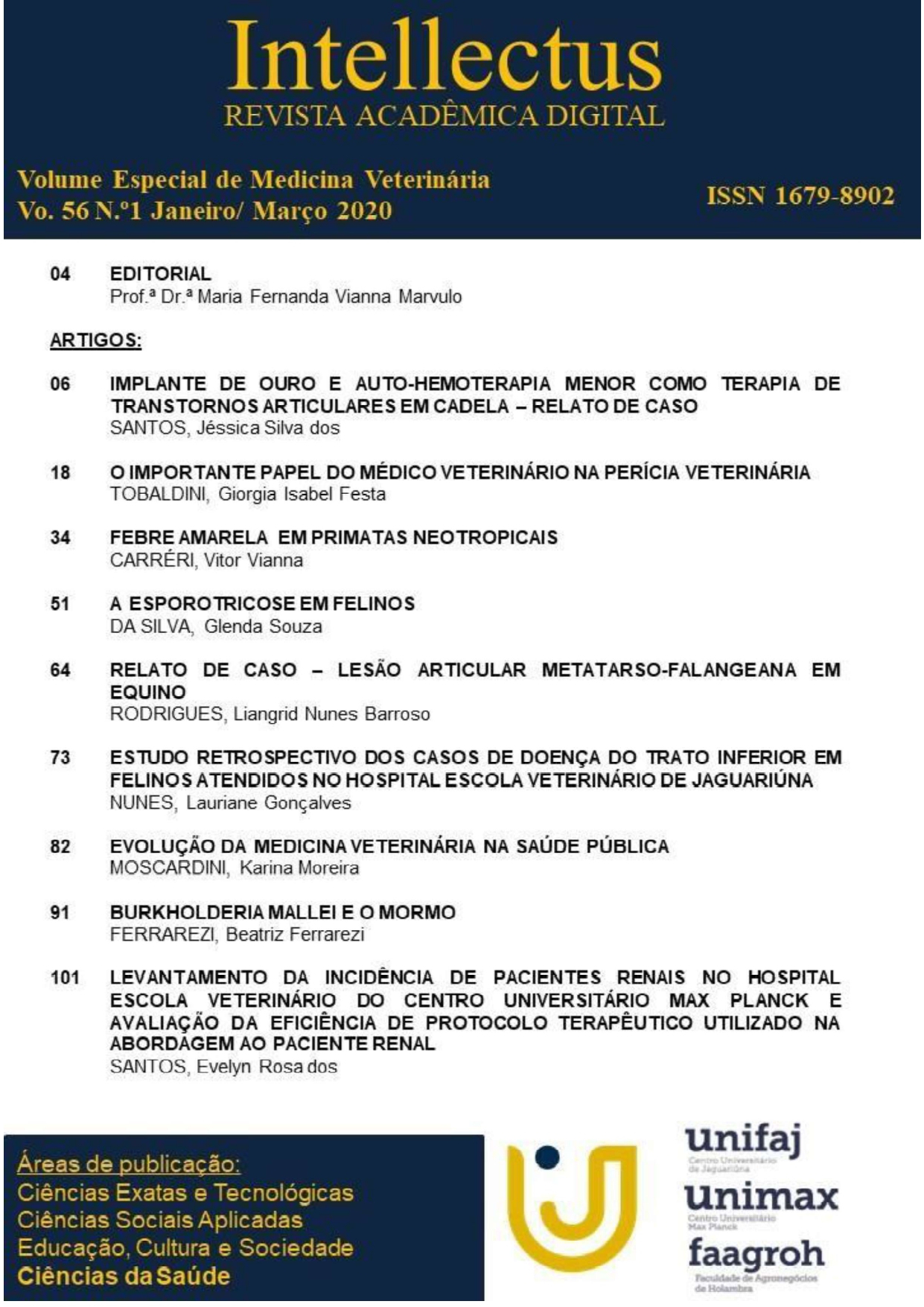Yellow Fever In Neotropical Primates
Keywords:
yellow fever, São Paulo, Epidemiological BulletinAbstract
Yellow fever is an infectious, non-contagious disease that is transmitted to humans by the bite of an infected mosquito, and presents itself in two distinct forms, the wild and the urban. The disease is present in Africa (most seriously) in South America and Central America. According to data from Epidemiological Bulletin No. 34/2017 of the Ministry of Health from December 2016 to March 2017, more than 4,240 primates have died as a result of yellow fever. The only way to eradicate the disease is through prevention through vaccination and vector control. With this, the World Health Organization (WHO) recommends that all people residing in areas at risk or traveling to these areas should be vaccinated. In this context, this work aims to review the confirmed cases of Yellow Fever in non-human primates in the Metropolitan Region of São Paulo in the year 2018. The methodology used was a bibliographical search, with searches on web sites of scientific articles, Paulo and Secretary of the State of Health, books related to the subject and magazines of the CRMV-SP. The results of this research reflect the viral expansion with the increase in the incidence of autochthonous human cases of Yellow Fever in the region. However, despite the disease, Mairiporã is the city with the highest incidence of human cases. The city began to carry out preventive measures against Yellow Fever only after the death of primates in the urban zone. It is suggested that bold measures be taken by the public power, in order to take to all population preventive measures with recommendation of vaccine against yellow fever.



